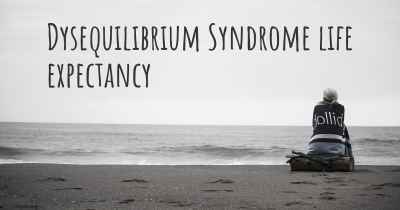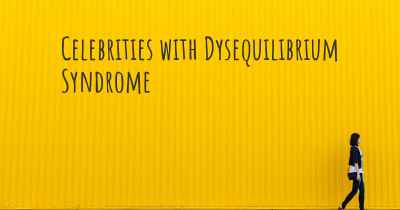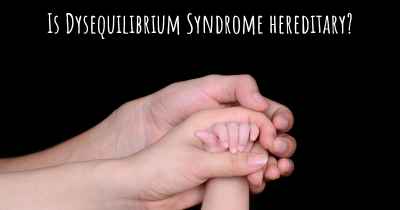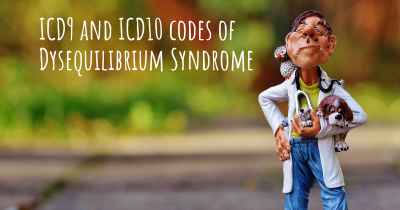Living with Dysequilibrium Syndrome. How to live with Dysequilibrium Syndrome?
Can you be happy living with Dysequilibrium Syndrome? What do you have to do to be happy with Dysequilibrium Syndrome? Living with Dysequilibrium Syndrome can be difficult, but you have to fight to try to be happy. Have a look at things that other people have done to be happy with Dysequilibrium Syndrome
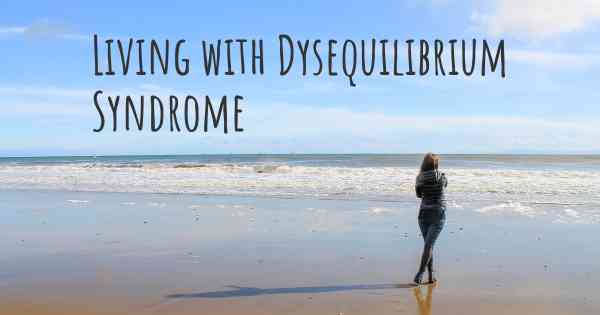
Living with Dysequilibrium Syndrome
Dysequilibrium Syndrome is a rare neurological disorder that affects a person's balance and coordination. Living with this condition can be challenging, but with the right strategies and support, individuals can lead fulfilling lives. Here are some tips and techniques to help manage Dysequilibrium Syndrome:
1. Seek Medical Advice
If you suspect you have Dysequilibrium Syndrome or have been diagnosed with it, it is crucial to consult with a healthcare professional. They can provide an accurate diagnosis, offer treatment options, and guide you on managing the symptoms effectively.
2. Build a Support Network
Living with Dysequilibrium Syndrome can be emotionally and physically demanding. It is essential to surround yourself with a supportive network of family, friends, and healthcare professionals who understand your condition and can provide assistance when needed. Joining support groups or online communities can also be beneficial in connecting with others who share similar experiences.
3. Physical Therapy
Physical therapy plays a crucial role in managing Dysequilibrium Syndrome. A trained therapist can design a personalized exercise program to improve balance, coordination, and muscle strength. Regular physical therapy sessions can help you regain confidence in your movements and enhance your overall quality of life.
4. Assistive Devices
Depending on the severity of your symptoms, using assistive devices can greatly improve your mobility and safety. Canes, walkers, or wheelchairs can provide stability and support while walking. Consult with an occupational therapist to determine which assistive devices are most suitable for your specific needs.
5. Fall Prevention
Individuals with Dysequilibrium Syndrome are at a higher risk of falls due to balance issues. Taking proactive measures to prevent falls is crucial. Ensure your living environment is free from hazards such as loose rugs or cluttered pathways. Installing grab bars in bathrooms and using non-slip mats can also help reduce the risk of accidents.
6. Modify Your Home
Adapting your home to accommodate your needs can significantly improve your daily life. Consider making modifications such as installing handrails on staircases, widening doorways for wheelchair accessibility, or using ramps instead of stairs. Consult with an occupational therapist or a home modification specialist for expert advice.
7. Manage Stress
Living with a chronic condition like Dysequilibrium Syndrome can be stressful. Stress can exacerbate symptoms and make daily life more challenging. It is important to find healthy coping mechanisms to manage stress, such as practicing relaxation techniques, engaging in hobbies, or seeking professional counseling if needed.
8. Maintain a Healthy Lifestyle
A healthy lifestyle can positively impact your overall well-being. Ensure you eat a balanced diet, exercise regularly within your capabilities, and get enough sleep. Avoid excessive alcohol consumption and smoking, as they can worsen symptoms and have detrimental effects on your health.
9. Communicate with Others
Openly communicating with your loved ones, friends, and coworkers about your condition can help them understand your needs better. Educate them about Dysequilibrium Syndrome and how it affects your daily life. This can foster empathy, support, and cooperation, making it easier for you to navigate social situations.
10. Stay Positive
Living with Dysequilibrium Syndrome can be challenging, but maintaining a positive mindset is crucial. Focus on your strengths, set realistic goals, and celebrate small victories. Surround yourself with positivity and engage in activities that bring you joy and fulfillment.
Remember, everyone's experience with Dysequilibrium Syndrome is unique, and what works for one person may not work for another. It is essential to work closely with your healthcare team to develop a personalized management plan that suits your specific needs and goals.
